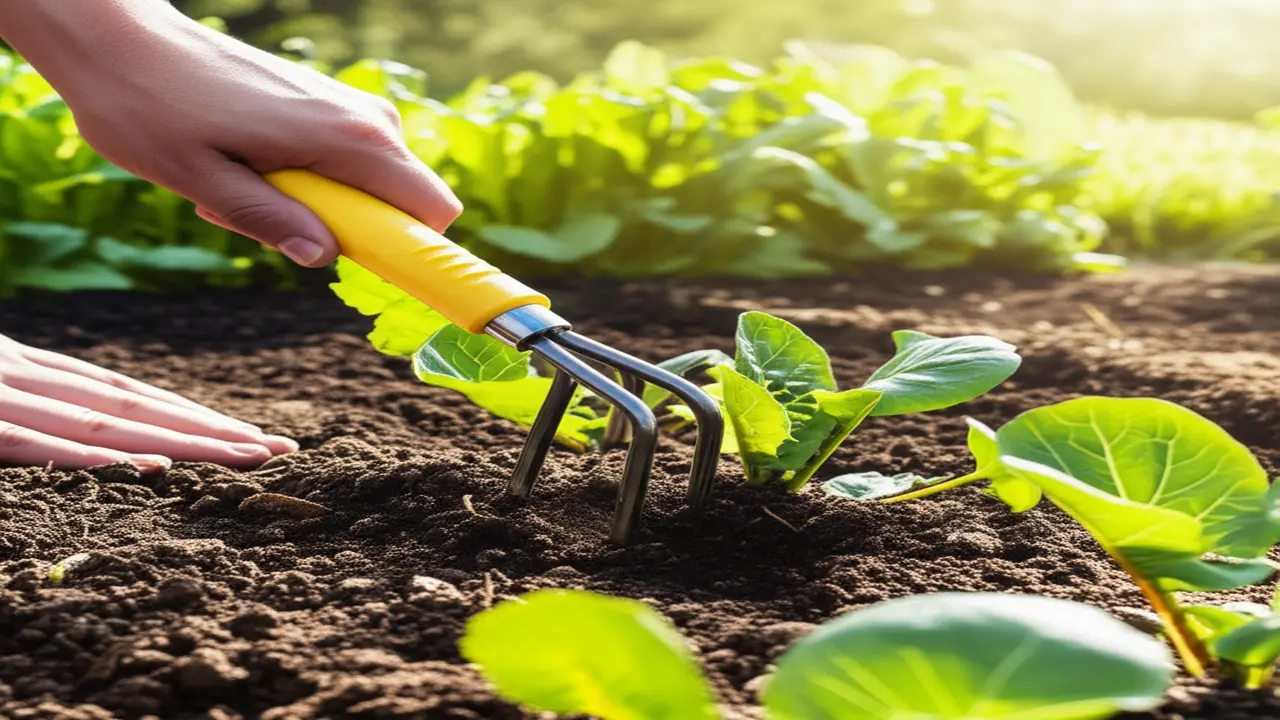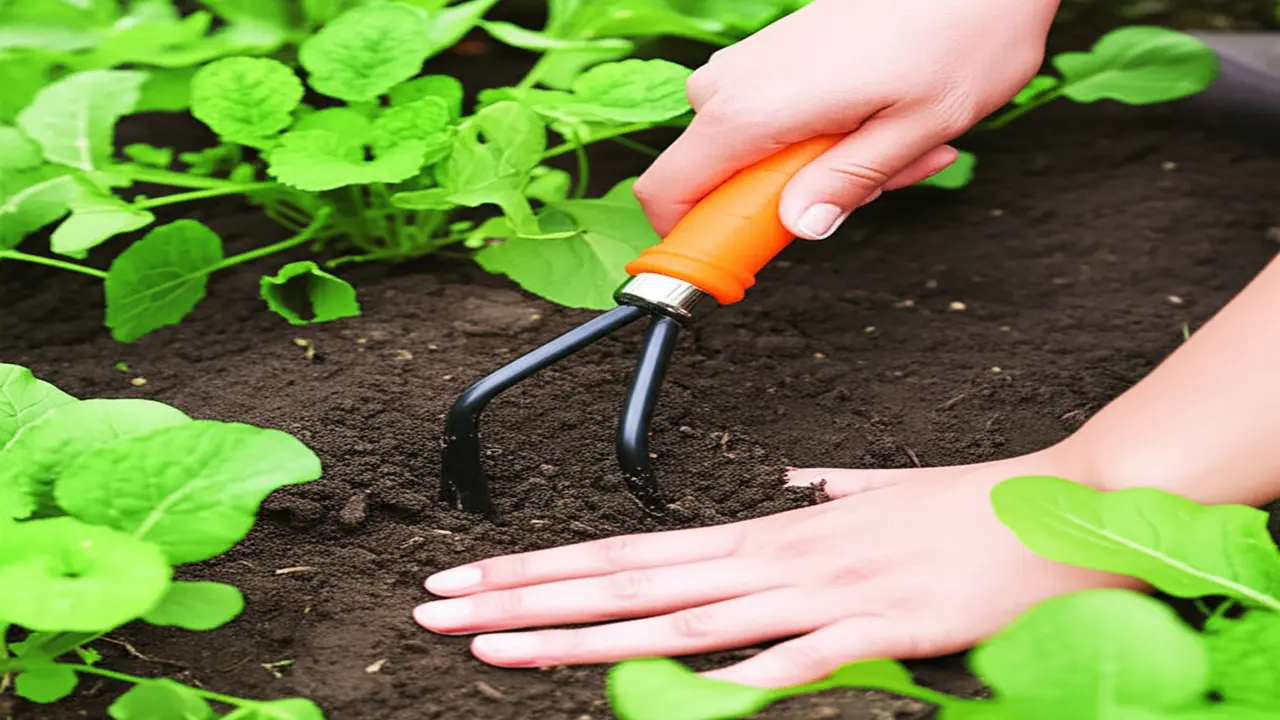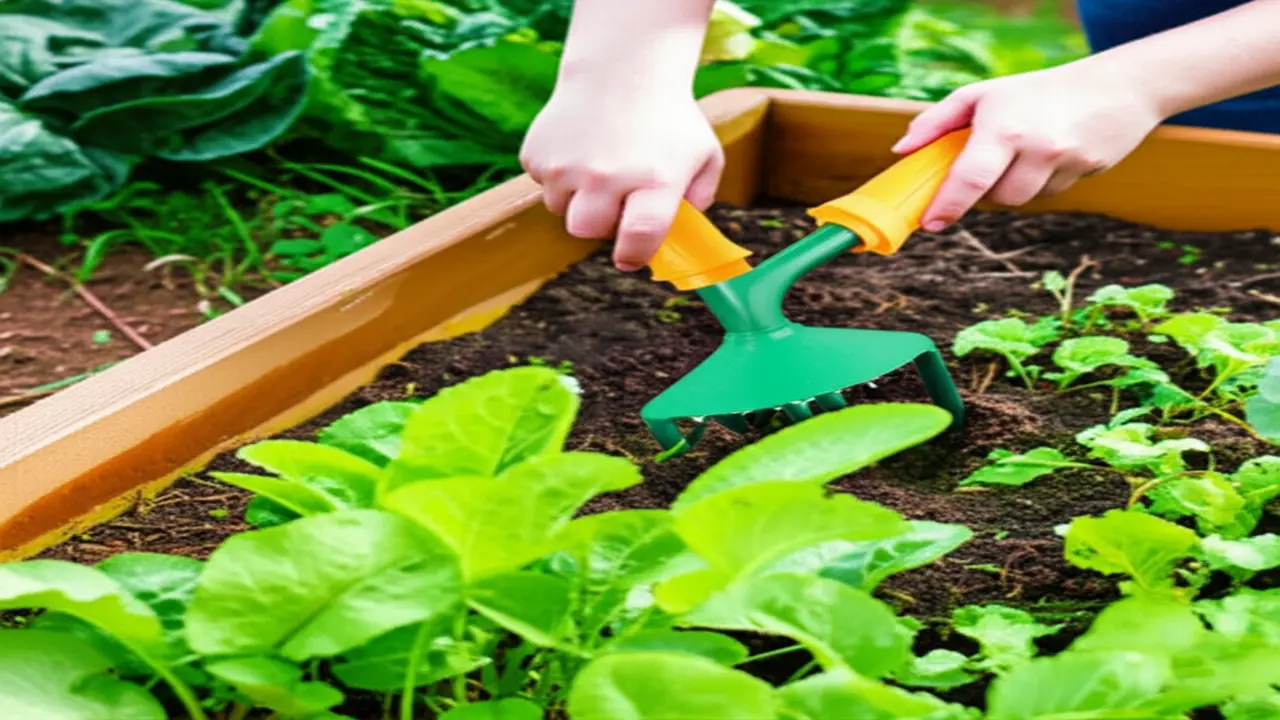Hand Cultivator Benefits: Essential Gardening Tool for 2025
Gardening continues to be a rewarding pastime and practical hobby for novices and seasoned experts alike. Among the array of gardening tools available, the hand cultivator stands out for its simplicity and multifaceted utility in maintaining healthy and productive gardens. This article delves into the key hand cultivator benefits for gardeners in 2025, demonstrating why this tool remains a crucial companion in the green spaces of home growers worldwide.
Thank you for reading this post, don't forget to subscribe!
Introduction: What is a Hand Cultivator and Why It’s a Gardener’s Friend
A manual cultivator, often called a hand cultivator, is a small gardening tool featuring several sturdy tines attached to a handle, designed for manual soil manipulation. Its primary function involves loosening and aerating soil around plants, efficiently controlling weeds, and preparing garden beds with precision. Whether you are a beginner planting your first seeds or an experienced horticulturist tending a complex landscape, the hand cultivator is indispensable for maintaining soil vitality, fostering plant health, and managing weeds with care.
Among the overwhelming choices of gardening equipment, the hand cultivator’s advantages address soil health improvement, precise weed control, and ease of maneuvering in tight spaces. This combination makes it an invaluable element for sustained garden maintenance and successful cultivation.
Benefit 1: Significantly Improves Soil Structure and Health
The gentle yet effective action of the hand cultivator’s tines is key to improving the soil’s physical condition. Unlike heavy machinery or harsh tilling tools that risk destroying soil layers or compacting the earth, the hand cultivator loosens compacted ground without damaging the delicate soil matrix. This aeration process enables better penetration of air, water, and nutrients which are vital for root development and microbial activity.
This tool is particularly beneficial when preparing soil before sowing seeds or transplanting seedlings, creating an ideal environment for roots to establish. Soil science principles highlight the importance of aeration in supporting healthy microbial populations and allowing oxygen to aid in organic matter decomposition, essential for fertile soil.
According to the University of Illinois Extension, proper soil aeration enhances nutrient uptake by plants, demonstrating a foundational principle of productive gardening.
Benefit 2: Highly Effective and Targeted Weed Control
One of the hand cultivator benefits that gardeners value most is its capability for selective and efficient weed removal. The design allows the tines to grip and gently pull weed roots to the surface, disrupting their ability to regrow. This mechanism outperforms simple surface chopping, which often leaves root fragments behind, leading to persistent weed challenges.
Ideal for weeding between rows or close to delicate plants, the hand cultivator provides precise weed management without harming desirable plants. This is especially useful for rapid removal of young weeds before they establish or spread.

Benefit 3: Unmatched Maneuverability and Ease of Use
Thanks to its lightweight and compact design, the hand cultivator excels at working in tight or confined gardening spaces. Raised beds, container gardens, and narrow crop rows are ideal environments where larger tools like hoes or powered tillers become inefficient or risky for plants.
The ease of handling reduces fatigue and allows gardeners to exert more control, minimizing accidental damage to plant roots or stems. This particularly suits gardeners who have limited physical strength or prefer manual precision over mechanical force.

Benefit 4: Versatility for Multiple Gardening Tasks
Beyond soil shaking and weeding, a hand cultivator is a versatile asset in the gardening toolkit. It aids in mixing compost or fertilizers into the soil’s surface layer, promoting even distribution without over-disturbing the ground beneath. This versatility extends to shaping shallow furrows for seed sowing, leveling soil patches, or managing cover crops.
This flexibility allows gardeners to reduce the number of tools carried and simplifies workflow, making garden upkeep more straightforward and efficient. The hand cultivator integrates smoothly with other methods and tools, complementing tasks that range from soil preparation to ongoing garden maintenance.
Benefit 5: Gentle on the Soil and Ecosystem
A crucial advantage of manual cultivation is its minimal disruption to the soil ecosystem. Powered tillers and aggressive cultivation can harm earthworms and beneficial microorganisms critical to soil fertility. The hand cultivator’s manual, controlled action preserves these populations, supporting sustainable and no-till or low-till gardening practices.
By maintaining soil integrity and living organisms, it helps gardeners uphold an ecological balance, fostering healthier plants naturally. This approach aligns with modern sustainable gardening philosophies, emphasizing gentle but effective soil management.
Benefit 6: Cost-Effective and Low Maintenance
Compared to electric or combustion-powered gardening equipment, the hand cultivator is an affordable entry point for anyone looking to improve their garden’s soil and control weeds. Its simple construction requires minimal upkeep—primarily cleaning after use and occasional sharpening of the tines—to maintain effectiveness over several gardening seasons.
This tool represents excellent long-term value, offering performance and reliability without the operational costs or complexities associated with powered tools. It’s ideal for gardeners mindful of budget without compromising on quality.
Benefit 7: Provides a Connection to the Gardening Process
Using a hand cultivator encourages gardeners to work closely with their soil and plants, fostering a deeper understanding and appreciation of garden conditions. This manual contact offers mental and physical benefits, promoting mindfulness and satisfaction that complements the gardening experience beyond mere tasks.
Such engagement often leads to better gardening decisions, as careful observation reveals subtle changes in soil moisture, texture, or plant health, which may otherwise go unnoticed.
Hand Cultivator vs. Other Tools: When to Choose It
| Tool | Best Use Case | Hand Cultivator Role |
|---|---|---|
| Hoe | Broad weeding and breaking soil surface | Close and precise weed removal within plant rows and gentle tilling |
| Garden Fork | Deep soil loosening and turning | Surface aeration and soil preparation that preserves structure |
| Tiller | Large-scale soil cultivation and mixing | Selective, small-scale tasks with precision and minimal disturbance |
This comparative insight helps gardeners select the right tool based on task scale, soil condition, and plant sensitivity, highlighting scenarios where the hand cultivator excels with its unique benefits.
Tips for Getting the Most Out of Your Hand Cultivator
Maximizing the effectiveness of your hand cultivator involves careful selection and proper technique. Choose tine configurations matching your soil texture and gardening goals—three to five sturdy tines typically cater to diverse needs. Operate the tool when the soil moisture is optimal, usually slightly damp but not saturated, to avoid clumps or excessive soil disturbance.
Adopt a gentle raking motion for aerating and a firm but controlled action for weed removal. After each use, clean residual soil off the tines and sharpen edges periodically to maintain penetration ease. These practices will extend your tool’s lifespan and amplify its gardening contribution.
Conclusion: Why a Hand Cultivator Belongs in Every Gardener’s Shed
Summing up, the hand cultivator benefits encompass soil health enhancement through aeration, precise and effective weed control, ease of handling in confined spaces, versatile utility for many tasks, eco-friendly soil management, affordability, and a rewarding connection to gardening. It remains a fundamental instrument, suiting a broad spectrum of gardeners across expertise and garden sizes.
In 2025 and beyond, including a hand cultivator in your gardening toolkit ensures healthier soil, manageable garden maintenance, and a rewarding hands-on growing experience. For gardeners aiming to cultivate thriving plants with efficient effort, this tool is irreplaceable.
For more insights on essential gardening tools, visit Garden Item Reviews, a trusted source for expert-backed recommendations and practical advice. Also, explore external expert guidance like the Royal Horticultural Society for comprehensive gardening knowledge and the Fine Gardening’s hand tool guide for practical tips on tool use and selection.
Frequently Asked Questions (FAQs)
- What type of soil is best for using a hand cultivator?
- The hand cultivator works best in moderately moist soil—too dry and hard soil reduces effectiveness; too wet soil can cause clumping and damage soil structure. Ideal timing is after a light rain or watering when soil is loose yet firm enough.
- Can a hand cultivator replace a tiller?
- While a hand cultivator offers precision and gentle soil disturbance, it is not a substitute for large-scale tilling. It’s ideal for small plots, raised beds, and targeted tasks; tillers suit bigger areas requiring deep and broad cultivation.
- How often should you use a hand cultivator in the garden?
- Frequency depends on garden needs. Aeration and weed control are often performed weekly or as needed, especially during the growing season, to maintain soil health and manage weeds effectively.
- Are hand cultivators suitable for all gardeners?
- Yes, the tool is user-friendly, lightweight, and adaptable, making it beneficial for gardeners of all levels, including beginners, seniors, and those who prefer manual gardening methods over powered equipment.
